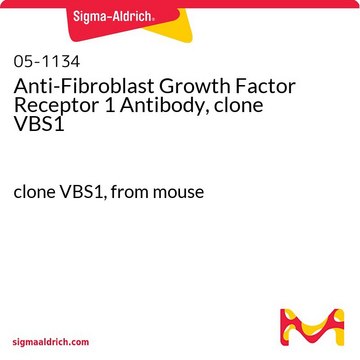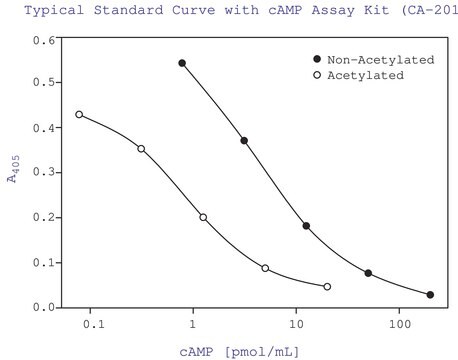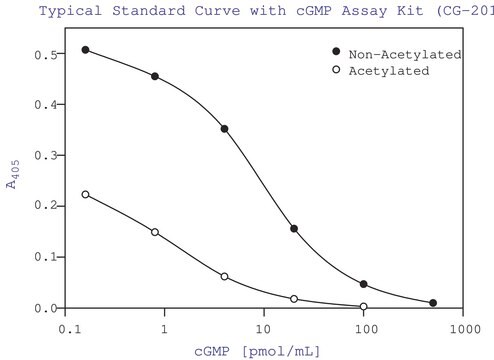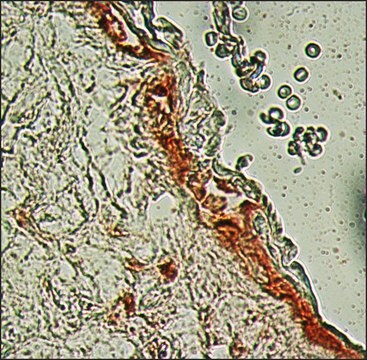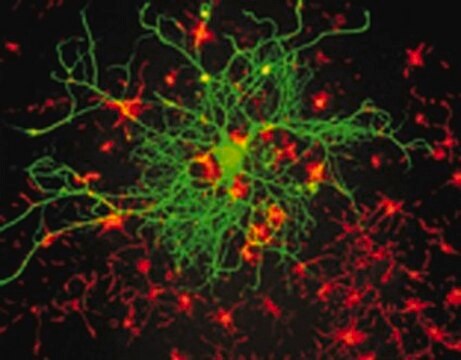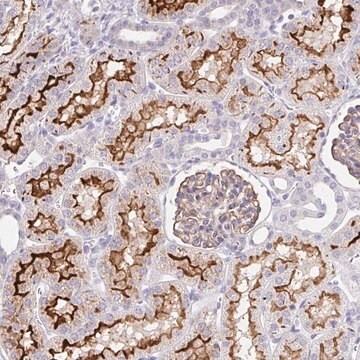Wichtige Dokumente
F5421
Anti-Fibroblast Growth Factor Receptor-1 antibody produced in rabbit
~1 mg/mL, affinity isolated antibody, buffered aqueous solution
Synonym(e):
Anti-FGFR-1
About This Item
Empfohlene Produkte
Biologische Quelle
rabbit
Qualitätsniveau
Konjugat
unconjugated
Antikörperform
affinity isolated antibody
Antikörper-Produkttyp
primary antibodies
Klon
polyclonal
Form
buffered aqueous solution
Mol-Gew.
antigen 110-120 kDa
Speziesreaktivität
human
Verpackung
antibody small pack of 25 μL
Konzentration
~1 mg/mL
Methode(n)
immunohistochemistry (formalin-fixed, paraffin-embedded sections): 1:200 using trypsin-digested human and animal tissue sections
immunoprecipitation (IP): suitable
western blot: 1:400 using an extract of FGFR-1 transfected cells
UniProt-Hinterlegungsnummer
Versandbedingung
dry ice
Lagertemp.
−20°C
Posttranslationale Modifikation Target
unmodified
Angaben zum Gen
human ... FGFR1(2260)
Allgemeine Beschreibung
Spezifität
Staining of the product is specifically inhibited with the FGFR-1 immunizing peptide. No reaction with human FGFR-2 and FGFR-3 is detected.
Immunogen
Anwendung
- immunoprecipitation
- immunofluorocytochemistry
- immunohistochemistry
- immunoblotting
Physikalische Form
Haftungsausschluss
Sie haben nicht das passende Produkt gefunden?
Probieren Sie unser Produkt-Auswahlhilfe. aus.
Lagerklassenschlüssel
10 - Combustible liquids
WGK
WGK 2
Flammpunkt (°F)
Not applicable
Flammpunkt (°C)
Not applicable
Hier finden Sie alle aktuellen Versionen:
Besitzen Sie dieses Produkt bereits?
In der Dokumentenbibliothek finden Sie die Dokumentation zu den Produkten, die Sie kürzlich erworben haben.
Unser Team von Wissenschaftlern verfügt über Erfahrung in allen Forschungsbereichen einschließlich Life Science, Materialwissenschaften, chemischer Synthese, Chromatographie, Analytik und vielen mehr..
Setzen Sie sich mit dem technischen Dienst in Verbindung.